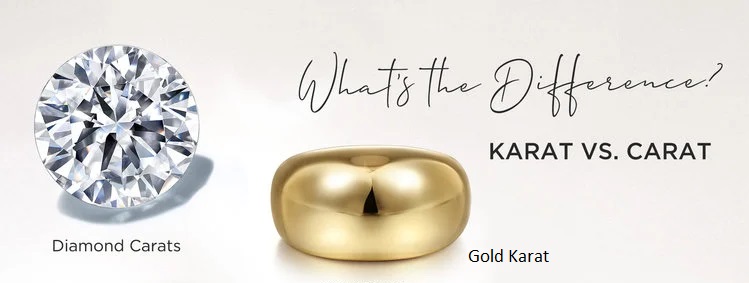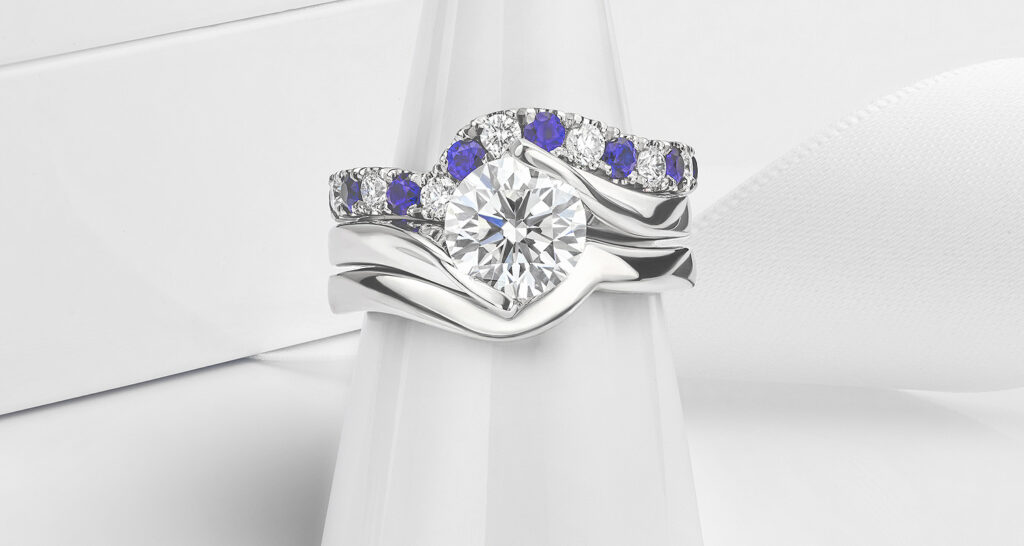Diamonds, revered for their timeless elegance and rarity, continue to capture the imagination of jewelry enthusiasts worldwide. In the realm of diamond evaluation, the concept of carat weight holds paramount significance. Understanding the intricacies of diamond carat weight is essential for both aficionados and prospective buyers, providing crucial insights into the nuances that define the value and allure of these precious gemstones. Let us embark on a comprehensive journey to unravel the essence of diamond carat weight and its multifaceted implications.
What Does Diamond Carat Mean?
In the lexicon of gemstones, ‘carat’ serves as the standard unit for measuring the weight of a diamond. One carat is equivalent to 200 milligrams or 0.2 grams. It is imperative to emphasize that carat signifies the weight of the diamond, not its size or dimensions. While a higher carat weight generally translates to a larger diamond, other factors, including cut and shape, significantly influence the stone’s visual size and appeal.
How Is a Diamond Carat Measured?
The measurement of diamond carat weight demands meticulous precision and accuracy. Skilled jewelers utilize specialized scales calibrated to discern the slightest weight variations. These precision scales provide an accurate assessment of the diamond’s weight in carats, ensuring transparency and authenticity in the evaluation process. Advanced technologies, including microbalances and electronic scales, have revolutionized the measurement process, facilitating precise and reliable determinations of diamond carat weight.
What Is the Difference Between Carat and Karat?
To avoid any confusion, it is vital to distinguish between ‘carat’ and ‘karat.’ While ‘carat’ refers to the weight of a diamond, ‘karat’ pertains to the purity of gold. Karat represents the proportion of pure gold in a piece of jewelry, with 24 karat indicating pure gold, while 18 karat gold denotes an alloy consisting of 75% gold and 25% other metals. Understanding this disparity is essential to grasp the nuances of terminology within the jewelry industry accurately.

What’s the Difference Between Diamond Carat Weight and Stone Size?
Diamond carat weight and stone size are intertwined yet distinct concepts in the realm of diamonds. While carat weight directly corresponds to the weight of the diamond, stone size encompasses various dimensions, including the diamond’s physical dimensions, shape, and cut. An expertly cut diamond can appear larger or smaller depending on its proportions and the way it interacts with light. Thus, the evaluation of diamond size involves a comprehensive analysis of these multifaceted attributes, not solely focusing on carat weight.
Does Size Really Matter in a Diamond?
Although carat weight influences the size of a diamond, it does not solely dictate the stone’s visual appeal and value. Factors such as cut, color, and clarity play a pivotal role in shaping a diamond’s overall brilliance and desirability. A well-cut diamond with impeccable clarity and color may radiate a captivating allure, surpassing the charm of a larger, less refined stone. Therefore, it is the meticulous balance of these elements that defines the true magnificence of a diamond, transcending mere numerical measurements.
How Does Carat Affect a Diamond’s Price?
Carat weight significantly influences a diamond’s price, making it one of the critical determinants of a diamond’s overall value. The relationship between carat weight and price is not linear; rather, it operates on a tiered scale that reflects the market’s demand for larger diamonds. Several key factors contribute to how carat weight affects a diamond’s price:
Rarity and Demand: Diamonds with higher carat weights are relatively rarer compared to smaller diamonds. The rarity factor increases their desirability and, consequently, their price. The limited supply of larger diamonds often translates to a significant price premium, as they are sought after by collectors, investors, and individuals looking for statement pieces.
Perceived Value: The general perception among buyers is that larger diamonds are more valuable. This notion is influenced by societal standards and personal preferences. As a result, diamonds with higher carat weights are often perceived as more prestigious and are priced accordingly, despite other factors such as cut, color, and clarity.
Cut and Proportions: While carat weight is significant, the quality of the cut and the proportions of the diamond also play a crucial role in determining its price. A well-cut diamond with excellent proportions enhances its brilliance and overall visual appeal, thereby affecting its market value. Even if a diamond has a substantial carat weight, its value may decrease if the cut is suboptimal.
Market Trends and Supply Chains: Fluctuations in market trends, along with shifts in the supply chain, can impact the pricing of diamonds. Market demand, economic conditions, and changes in consumer preferences can influence the pricing strategy for diamonds of varying carat weights. Additionally, alterations in the supply chain, including mining regulations and distribution networks, can affect the availability and pricing of diamonds of different sizes.
Certification and Grading: Accredited gemological laboratories provide certifications and grading reports that authenticate the quality and characteristics of diamonds, including their carat weight. These certifications significantly impact a diamond’s market value. Diamonds with higher carat weights and superior grading certificates are likely to command higher prices in the market due to their assured quality and authenticity.
What Carat Size Should a Diamond Engagement Ring Be?
Selecting the ideal carat size for a diamond engagement ring involves a nuanced consideration of personal preferences, budget constraints, and aesthetic inclinations. While some may prefer a larger carat size to make a bold statement, others may prioritize quality over quantity, opting for a smaller diamond with exceptional cut and clarity. Ultimately, the choice of carat size should align with the individual’s lifestyle, personality, and emotional significance attached to the ring, transcending mere numerical standards.

How Do You Compare Diamonds Using Per-Carat Cost?
The concept of per-carat cost serves as a valuable tool for evaluating and comparing diamonds effectively. By dividing the total cost of the diamond by its carat weight, one can ascertain the price per carat, providing a standardized metric for assessment. Comparing the per-carat cost of different diamonds enables buyers to gauge the value proposition associated with each stone, facilitating informed decision-making aligned with personal preferences and budget considerations.
Conclusion
In essence, the essence of diamond carat weight transcends mere numerical metrics, embodying the finesse, rarity, and everlasting charm that define these timeless gemstones. By unraveling the intricacies of diamond carat weight, enthusiasts and prospective buyers can embark on a journey of profound appreciation, acknowledging the unparalleled beauty encapsulated within these remarkable treasures of the Earth.